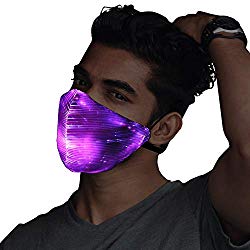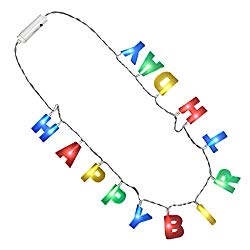
Why do Things Glow in the Dark?
A Scientific Inquiry into Paints and Pigments that Glow
Why do some things things glow in the dark? How does that work?
I’m talking about materials that truly glow after you turn out the lights, not the ones that glow under black light or ultraviolet light, which are really just converting invisible high energy light into a lower energy form visible to your eyes. There are also items that glow because of ongoing chemical reactions that produce light, like the chemiluminescence of glow sticks. There are also bioluminescent materials, where the glow is caused by biochemical reactions in living cells, and glowing radioactive materials, which may emit photons or glow because of heat. These things glow, but how about glowing paints or the stars you can stick on the ceiling?
I mean things that really glow when the lights are completely turned off. Materials that glow in black light or ultraviolet light are taking high energy light, undetectable to the human eye and converting it into lower energy light that can be seen. Then there are things that glow from chemical reactions that produce light. like glow sticks. Bioluminescent materials glow because of biochemical reactions in cells. Some radioactive materials glow or emit light particles because of heat. While all these things do glow, it is simple glowing paints or glowing novelty stars I’d like to examine further.

Phosphorescence is the Key
Phosphorescence is the key to why glowing stars and plastics glow in the dark. The process in which a material absorbs energy and then slowly releases it in the form of visible light is known as photoluminescence. \On the other had, fluorescent materials release light almost immediately, so they don’t readily glow in the dark.
Zinc sulfide was the primary ingredient in most glow in the dark products until the modern era of glow. Zinc sulfide would absorb energy from light and then slowly release it over time, however the energy wasn’t visible so phosphor chemicals had to be added to enhance the color and glow. The phosphers converted the invisible energy into visible light.
Modern glow in the dark stuff uses strontium aluminate instead of zinc sulfide. It stores and releases about 10 times more light than the zinc sulfide and its glow last longer. The rare earth europium is often added to enhance the glow. The modern paints are durable and water-resistant, so they can be used for outdoor decorations and fishing lures and not just jewelry and plastic stars.
Nowadays strontium aluminate is used in most glow in the dark materials. It is up to ten times more efficient at storing and releasing light than zinc sulfide. Also, rare earth euopium is added to kick the glow up a notch. Paints made with these components are resistant to water and durable and can be used indoors or outdoors for decorations and even fishing lures.

It isn’t Easy Being Green
Most glow in the dark items are green because as humans, our eyes are very sensitive to green light. Therefore green light is brightest in appearance to us. Also, green phosphors glow longest and brightest at the cheapest cost. Furthermore, green phosphors can be charged by sunlight or strong indoor light because they can absorb a wide range of light wavelengths.

Thermoluminescence
A material is thermoluminescent when it releases light when heated. Thermoluminscent materials absorbed infrared radiation, but emit visible light. Chlorophane is a type of fluorite that can glow in the dark from exposure to body heat.


